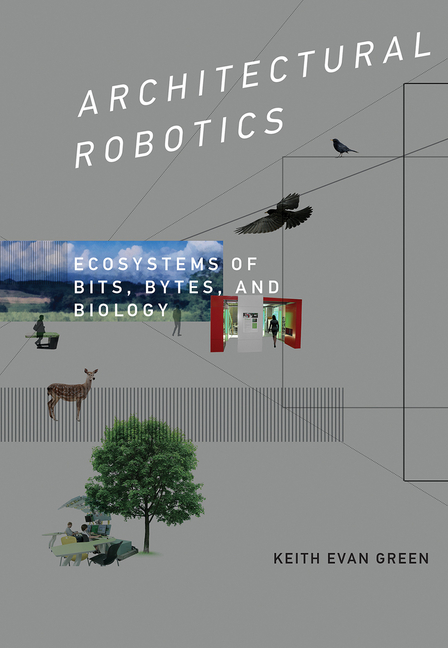
Architectural Robotics: Ecosystems of Bits, Bytes, and Biology
| Quantity | Price | Discount |
|---|---|---|
| List Price | $34.95 | |
| 1 - 24 | $29.71 | 15% |
| 25 - 99 | $21.67 | 38% |
| 100 - 249 | $20.97 | 40% |
| 250 - 499 | $20.27 | 42% |
| 500 + | $19.92 | 43% |
$34.95
Book Information
| Publisher: | MIT Press |
|---|---|
| Publish Date: | 02/12/2016 |
| Pages: | 288 |
| ISBN-13: | 9780262033954 |
| ISBN-10: | 026203395X |
| Language: | English |
Full Description
The relationship of humans to computers can no longer be represented as one person in a chair and one computer on a desk. Today computing finds its way into our pockets, our cars, our appliances; it is ubiquitous--an inescapable part of our everyday lives. Computing is even expanding beyond our devices; sensors, microcontrollers, and actuators are increasingly embedded into the built environment. In Architectural Robotics, Keith Evan Green looks toward the next frontier in computing: interactive, partly intelligent, meticulously designed physical environments. Green examines how these "architectural robotic" systems will support and augment us at work, school, and home, as we roam, interconnect, and age.
Green tells the stories of three projects from his research lab that exemplify the reconfigurable, distributed, and transfigurable environments of architectural robotics. The Animated Work Environment is a robotic work environment of shape-shifting physical space that responds dynamically to the working life of the people within it; home+ is a suite of networked, distributed "robotic furnishings" integrated into existing domestic and healthcare environments; and LIT ROOM offers a simulated environment in which the physical space of a room merges with the imaginary space of a book, becoming "a portal to elsewhere."
How far beyond workstations, furniture, and rooms can the environments of architectural robotics stretch? Green imagines scaled-up neighborhoods, villages, and metropolises composed of physical bits, digital bytes, living things, and their hybrids. Not global but local, architectural robotics grounds computing in a capacious cyber-physical home.

